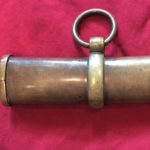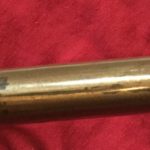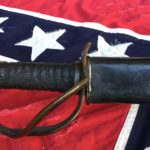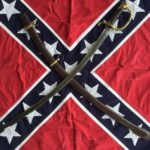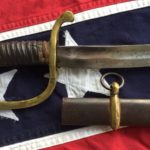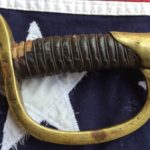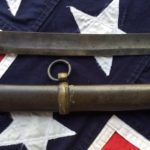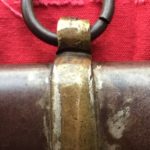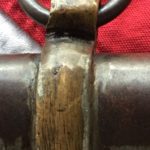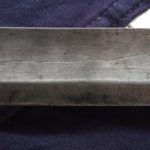- Thomas Griswold & Co. Artillery Saber
- Thomas, Griswold Sword
- Thomas, Griswold Lt. Artillery Sword
- Thomas, Griswold Handle & Guard
- Thomas, Griswold & Co. New Orleans
- Thomas, Griswold Pommel Cap
- Thomas, Griswold Drag Plate
- Thomas, Griswold. Ring, Mount & Throat
- Pommel, Brim & Tang Mound
- Knucklebow
- Pommel
- Thomas, Griswold Lap Seam
- Thomas, Griswold & Co. Saber
- Confederate Artillery Saber and Scabbard
The partnership of Henry Thomas Jr. and A.B. Griswold was a welcome combination for the Confederacy in the spring of 1861. New Orleans was the largest city in the South with a population of over 170,000 and there was much money to be made as aggressive entrepreneurs.
Thomas, Griswold & Co. we’re not only manufactures of military goods but importers as well and the large port of New Orleans would give them access to trade ships from Europe filled with many of the supplies the South needed.
Unfortunately there success only lasted a short while, Union Naval forces captured New Orleans April 25, 1862 putting an end to there brisk business and seizing South’s largest port.
For sometime now I’ve been searching for a Thomas, Griswold Artillery Saber……with its brass/bronze scabbard, makers mark ricasso and fine attention to detail, one can make the argument there was hardly a finer sword made South of the Mason Dixon Line.
My new saber & scabbard is in excellent condition, with an almost perfectly straight scabbard that has a sweet mustard patina and the lap seam is almost unnoticeable unlike most other Confederate scabbards.
As for the saber, where do I start….hmmmmmm. The leather grip on the artillery saber is about 75% intact with all its brass wire wrapping in place, the pommel, knucklebow and quillon all have a pleasant patina with some casting imperfections. The blade, fuller and edge are about as nice as any you will see, with its leather insulator still in place and a fine makers mark stamp this saber would rival any Northern made saber/sword.
I have many new pieces in my collection that I’ve yet to post at the Civil War Arsenal, I hope to photograph and write about them soon. In the mean while if you have any questions about this Artillery Saber or any of the other weapon in my arsenal feel free to contact me at civlwararsenal@yahoo.com attn: Gene West………oh, and if you have any Southern Weapons for sale maybe we can strike a deal…..I’m always in the market to buy. Thanks for stopping by, hope to see y’all soon.








